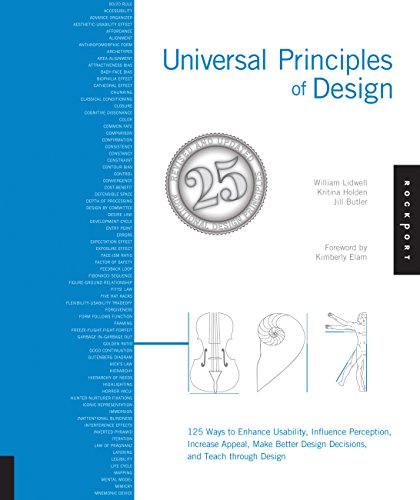Universal Principles of Design, Revised and Updated: 125 Ways to Enhance Usability, Influence Perception, Increase Appeal, Make Better Design Decisions, and Teach through Design
William Lidwell, Kritina Holden, Jill Butler
amazon.com
Universal Principles of Design, Revised and Updated: 125 Ways to Enhance Usability, Influence Perception, Increase Appeal, Make Better Design Decisions, and Teach through Design
William Lidwell, Kritina Holden, Jill Butler
amazon.com
weakest link in a system can function in one of two ways: it can fail and passively minimize damage, or it can fail and activate additional systems that actively minimize damage. An example of a passive design is the use of fuses in electrical circuits as described above. An example of an active design is the use of automatic sprinklers in a buildi
... See moreis said that a chain is only as strong as its weakest link. This suggests that the weakest link in a chain is also the least valuable and most expendable link—a liability to the system that should be reinforced, replaced, or removed. However, the weakest element in a system can be used to protect other more important elements, essentially making th
... See moreThe use of a weak element that will fail in order to protect other elements in the system from damage.
For example, electrical circuits are protected by fuses, which are designed to fail so that a power surge doesn’t damage the circuit. The fuse is the weakest link in the system. As such, the fuse is also the most valuable link in the system. The
Objects and environments that embody naturalness, simplicity, and subtle imperfection achieve a deeper, more meaningful aesthetic.
For example, many universities have learned the hard way that parents and students equate the quality of education with the price of tuition. To increase enrollment and address complaints about the rising costs of education, many boards of trustees reduce tuition. This, however, invariably results in a decrease, not an increase, in student enrollme
... See moreFinancial status is biologically important because it ensures a woman of security and status for herself and her children. However,
Sensitivity refers to the ease with which a variable in a system is altered by the measure. Invasiveness refers to the amount of interference introduced by the measure. Generally,
Use low-invasive measures whenever possible. Avoid high-invasive measures; they yield questionable results, reduce system efficiency, and can result in the system adapting to the measures. Consider using natural system indicators of performance when possible (e.g., number of widgets produced), rather than measures that will consume resources and in
... See more